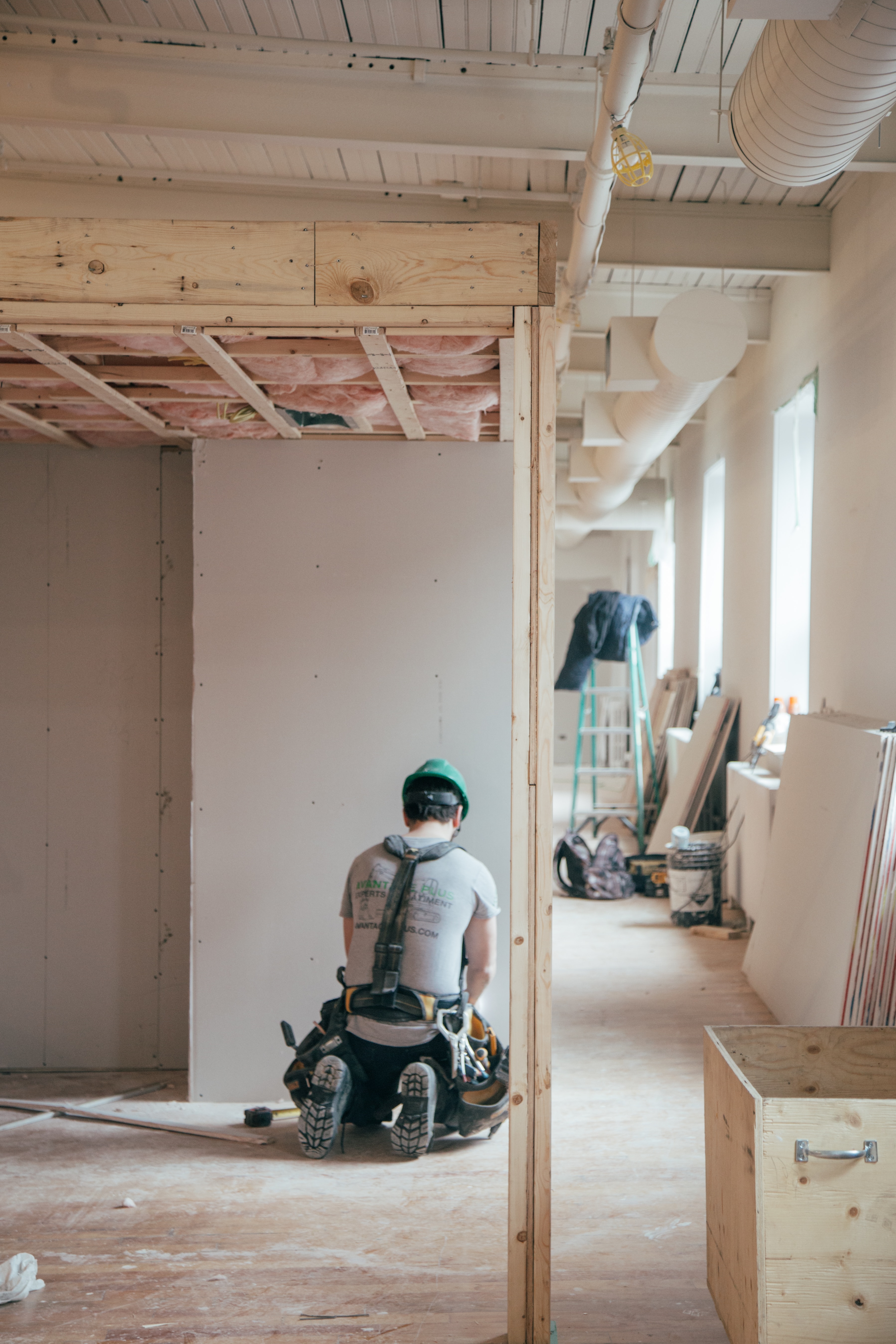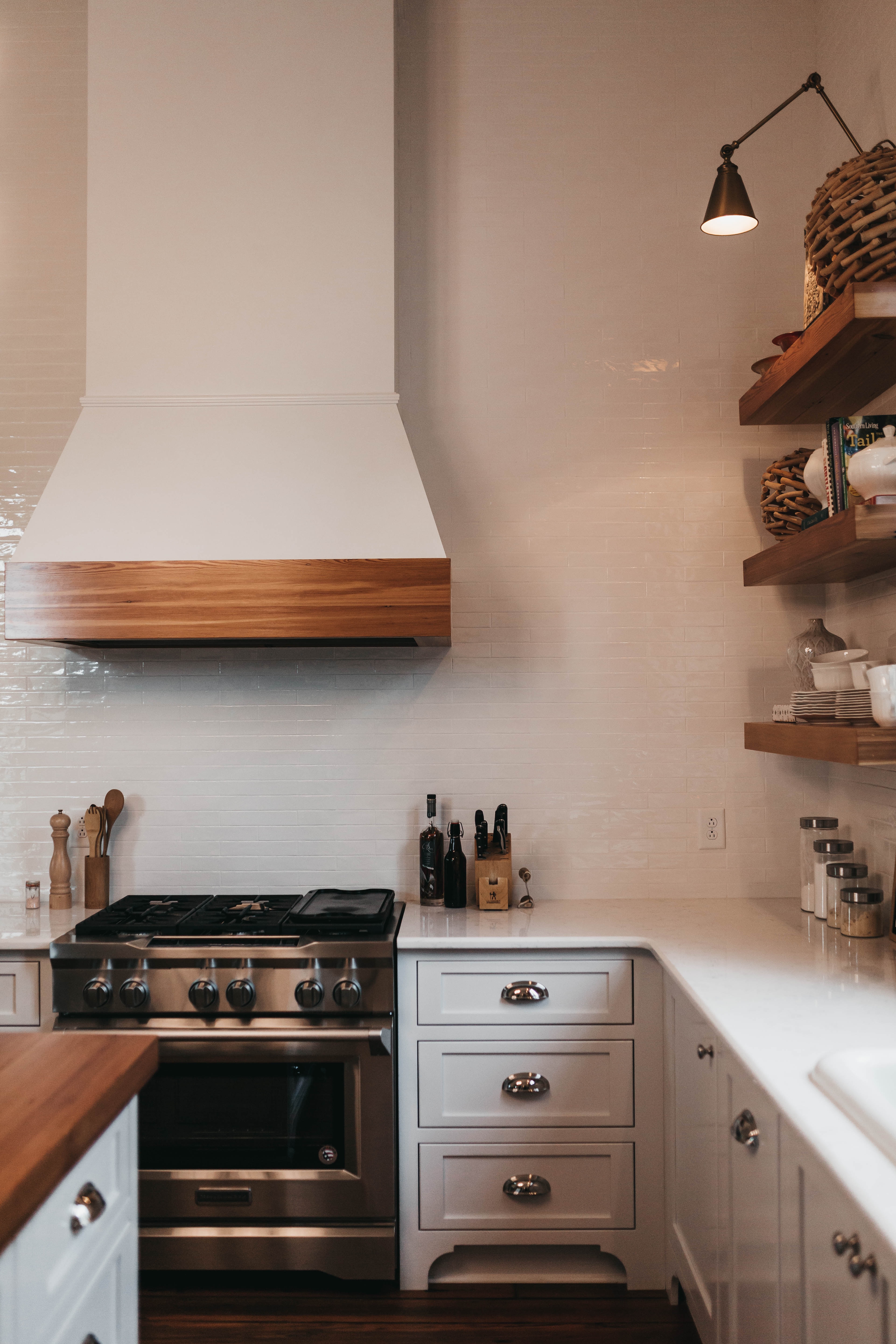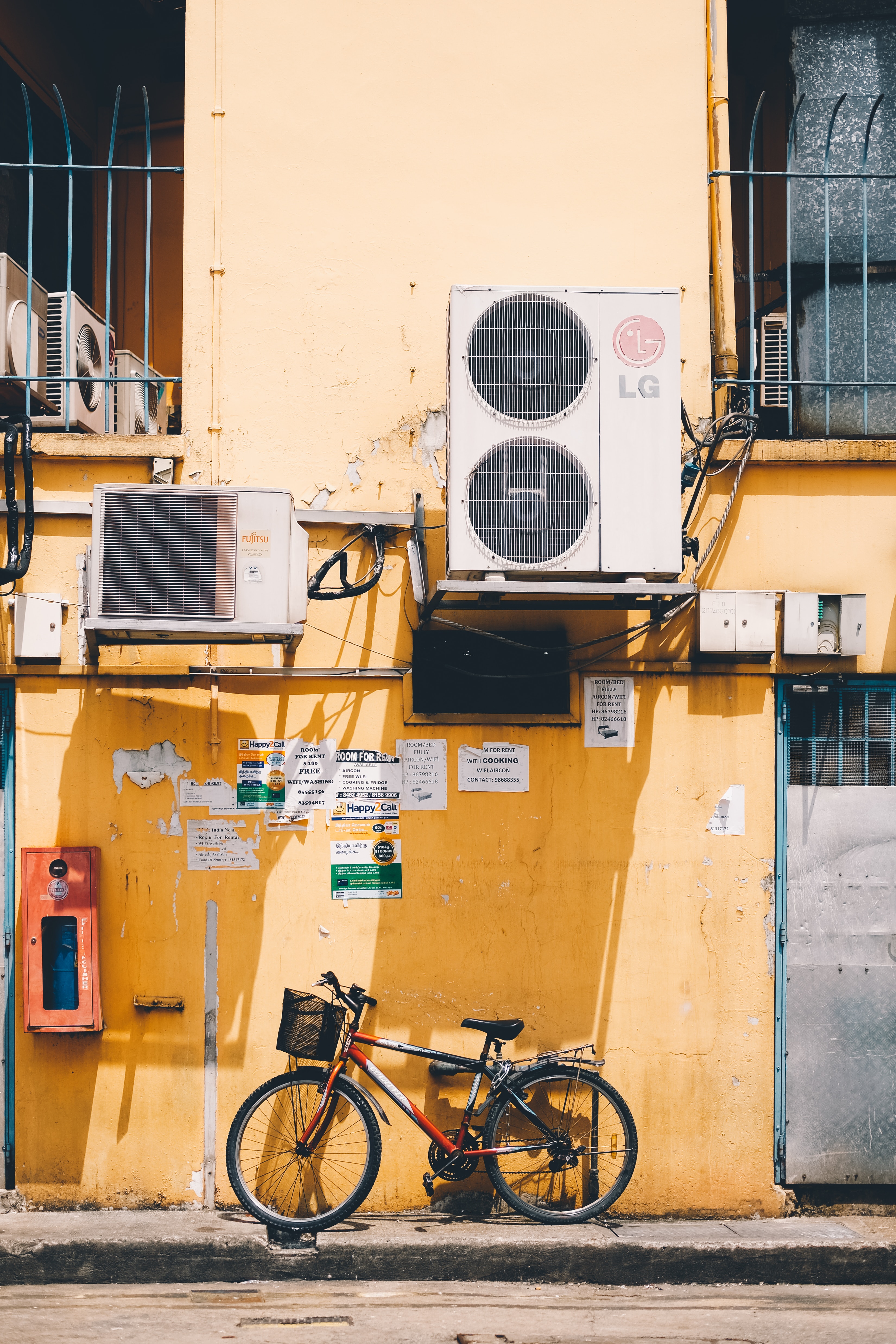Noisy neighbors, busy roads, and weekend parties: the world is certainly getting louder. While this may be great news for extroverts and college kids, this also makes it a lot harder for you and your family to find peace and quiet, especially when it comes to getting to sleep.
You can certainly invest in makeshift solutions, like noise-canceling headphones and white noise machines. However, you can also insulate your house from noise as a whole, giving you restful sleep without all the uncomfortable tricks. So, whether you live in a house, apartment, or condo, soundproof living is within reach! But first, you need to understand a bit about how your home works.
 Image by Giovanni Gargiulo from Pixabay
Image by Giovanni Gargiulo from Pixabay
Understanding Your Home
How Does Sound Work In Your Home
In order to soundproof your home, you first need to understand how sound works. Sound is simply a series of vibrations that our ears pick up and our brains interpret, but what’s important about sound is that it travels differently based on the materials it comes into contact with, as well as the quality of the air.
When sound hits hard surfaces, like walls and wooden furniture, the vibrations are reflected and sometimes amplified, causing the sound to reverberate throughout the room. By contrast, soft materials absorb sound. So, when any vibration reaches your house, your walls, hardwood floors, and appliances are often spreading the sound.
Which brings us to the idea of soundproofing. What is it, exactly? You might think that the most effective solution involves filling your house with soft, sound-absorbing objects, but sound absorption differs from soundproofing. Soundproofing is a way of preventing noise from entering or leaving the room entirely. This distinction is small but important, as sound is still entering your room when you increase your home’s sound absorption, and sound-absorbing is only one aspect of a soundproofed house.
There are four key principles to soundproofing that, when combined, work to seal your home completely from both internal and external noise. The principles are as follows:
Mass
Thick, heavy, solid objects work best for blocking airborne sounds. Voices, music, and nature are all examples of these sounds – they’re made solely from vibrating air particles, and aren’t transmitted via solid objects. That being said, non-airborne sounds are channeled and reflected by these objects, so they’re not a complete buffer against outside noise, Drywall, and mass-loaded vinyl are examples of soundproof materials that utilize this principle.
Damping
When an object makes a sound, it vibrates. For example, if you pluck a guitar string, you can see the string vibrate as it makes music. What happens when you press down on the string? The vibrations stop, and so does the sound. This demonstrates the principle of “damping,” which is simply a way of compressing objects to prevent them from vibrating. When it comes to soundproofing your home, damping is accomplished by applying noise proofing glues or other soundproof adhesives between stiff panels of building material. This glue creates a shearing force between the two panels; when sound hits these panels, friction occurs, converting the vibrations into heat and preventing the sound from entering your home. Damping is best at preventing the transmission of low-frequency vibrations, such as the hum of vehicles or bass beats.
Decoupling
Objects that stick together, vibrate together. This explains why sounds can reverberate throughout the entire house: vibrations carry from one wall to the next, from floorboard to floorboard, disturbing every square inch of your property. Decoupling works to counter this, creating a buffer of space within the architecture of the space so that vibrations don’t transmit throughout. While decoupling is best accomplished during the construction of the house, it can be incorporated afterwards – however, you will have to tear down the walls, ceiling, and floor in order to install furring channels and resilient sound clips.
Absorption
Surprisingly, absorption has the smallest role to play in soundproofing. Nonetheless, incorporating soundproof materials into the design of your home, as well as using acoustic ceiling tiles, fiberglass insulation, heavy curtains, and carpeting can help absorb additional external sounds.
These elements each target different sounds and vibrations, which is why they provide an effective soundproof seal when implemented together.
Top Noise Contributors In Your Home
Knowing the principles of soundproofing isn’t enough; it’s just as important to know where the sound is coming from.

The noise that enters your household can be separated into two key locations: internal source and external source sounds. External source sounds are exactly what it sounds like, and include the noise from neighbors, cars, nature, construction, trains, planes, and anything else keeping you up at night from outside your door. By contrast, Internal source sounds come from within your walls, and they include the sound of air vents and furnaces, other family members, snoring, electricity, and pets.
You might be thinking that this is awfully self-explanatory. However, making this distinction is crucial, as it can help you better understand the source of your sound problem, and which soundproofing principles are most important to preserving your quality of life. External sounds are most often airborne or low-frequency, so you’ll want to invest more in mass and damping solutions. Internal noise, by contrast, is often transmitted structurally, so decoupling will offer the most peace and quiet.
Maybe this sounds like a lot of work for something that can be solved with noise-canceling headphones. So, what are the benefits of soundproofing?
The Importance Of Soundproofing Your Home
Health & Personal Benefits
A quiet house yields restful sleep. Noisy homes can prevent you from entering deep sleep, making your nights restless and unrefreshing. Even being woken up once during the night is enough to ruin the quality of sleep you’re receiving, and sleep loss has been linked to numerous health effects, from affecting your cardiovascular health to worsening your mental health to increase risk of certain cancers and illnesses.
Additionally, a quiet space is a more productive space. Whether you’re getting work done at home, creating new artwork, or practicing yoga, a soundproofed home helps you focus, transforming your quality of life.
Neighbors
Nobody wants to hate their neighbors. With a soundproof house, you won’t have a reason to. Your neighbors can party through the night without disturbing you, and you can party through the night without disturbing them, too. Even if you only cross paths once a week, friendly neighbor relationships are essential to feeling safe and comfortable in your home, as you can’t build a community without enjoying the company of the people closest to you.
Regulation & Policy
Most homes have some sort of regulations involving noise control, but there’s a chance that your property isn’t up to code, especially if it’s older and unrenovated. Soundproofing your home can bring it up to standards, so you have one less thing to worry about once it sells.
Noise Pollution
Noise pollution is a fancy term for any noise that impacts your quality of life. Common generators of noise pollution include busy highways, running engines, airplanes, late-night bars, and other industrial sounds. Even if it goes unnoticed, noise pollution can cause some serious health detriments, from increased stress and cardiovascular risk to noise-induced hearing loss. Asleep or during the day, consistent exposure to noise pollution can harm you and your family, so it’s important to protect against it if you live in a noisy area.
Plans of selling in the future
Any real estate agent can tell you that quiet homes sell better. This is why many people prefer living in the suburbs, but even for those who prefer urban living, a home tour that’s wracked with noise pollution will end very quickly. A soundproofed home will sell faster and for much more whether the property is listed on the MLS or it is being sold with the help of a real estate agent. So while the price tag for soundproofing might seem high, you’ll earn this back easily when it comes time to selling your property.
Things To Consider Before Soundproofing Your Home
Speaking of the price tag, there are a couple of considerations you need to make before you fully invest in soundproofing your space. How expensive and time consuming the soundproofing process becomes depends on the needs of your house and family, but what follows are some rough estimates.
Budget

The average cost to soundproof a single room ranges between $1,000 and $2,500 dollars. Of course, this depends on what the room needs – are you simply hanging up thicker curtains and carpets, or do you need to upgrade the insulation and decouple the walls and floorboards? Additionally, the square footage of the room and your location in the United States play additional roles in the cost. To see what the average soundproofing budget looks like, check out this handy calculator from HomeAdvisor.
Time
Money and time go hand-in-hand, so you can expect a more expensive project to also take longer. If you hire a professional, then you can expect the soundproofing process to take anywhere from a single day to a week, depending on how intensive and invasive the process is. If you plan on making this a DIY project, give yourself much more time, especially if you plan on tearing into the walls. Installing new carpeting and windows can be tedious, but decoupling the walls and improving the insulation is downright time consuming, especially if you have a day job.
Convenience
Do you have another room you can sleep in while the first one is being renovated? How much furniture will you have to move while the carpet gets changed and the walls come down? Give yourself plenty of time and space to move things out of the way for the contractors, and be willing to be a bit uncomfortable for the time being.
Skills
Maybe you’re thinking about soundproofing the home yourself. Taking on any DIY project is both big and admirable, but you want to be sure to have the DIY skills before taking on a project this big. Most obviously, you need to be good with your hands. Any tool you use can easily become a hospital visit, and if you’re tearing down the walls and floorboards, you’re likely to be using electric and automated machines. Aside from that, a smart DIYer is a smart budgeter, and knowing how to find the best materials at the cheapest cost can save you big time. If you’re spending big on the resources for your project, you might as well just hire a contractor. Finally, and perhaps most importantly, you need to be patient. Patience isn’t something everyone considers a skill, but it takes a lot of practice to be patient. When you’re working on your soundproofing project, something is likely to go wrong or get in the way – that’s just the nature of home improvement. If you aren’t patient and willing to spend extra time, you could greatly sacrifice the quality of your soundproofing, rendering this project a waste of time and money.

DIY or Hire a Professional?
This brings us to one final consideration – DIY, or hire a professional? If this is your first DIY project, it may be too big for you, especially if you don’t know much about home construction. However, that doesn’t mean you have to rely on a contractor for everything. Hiring someone to soundproof your walls, floors, and windows might be all you need, and the rest – carpeting, curtains, and furniture – can be done on your own.
Things You Will Need To Soundproof A Home
The soundproofing toolkit is fairly large, though of course, what you actually need depends on what improvements you make to your house. Most, if not all, of these tools and materials, can be purchased at any Home Depot, Menard’s, or other home improvement store.
Tools Needed:
- Caulk Gun
- Cordless Drill
- Drywall Saw
- Hand Saw
- Soldering Torch
Materials for Soundproofing:
- Mass-Loaded Vinyl Sound Barrier
- Acoustic Mineral Wool Insulation
- Green Glue Soundproofing Compound
- Resilient Sound Channels
- Soundproof Drywall
- Acoustic Caulk/Sealant
- Soundproof Foam Panels
- Soundproof Blankets
- Soundproof Curtains
- Soundproofing Window Kit
- Weatherstripping
- Door Seals & Sweeps
- Soundproof Floor Underlayments
- Anti Vibration Floor Mats
- Soundproof Wallpaper & Paint
- Furniture and Other Household Items
What is STC Rating?
One common measure of a home’s effectiveness at reducing noise is its STC rating. STC, or sound transmission class, analyze the extent to which something reduces the noise entering your home. How an STC is measured gets a little confusing, but the basic idea is that any material absorbs a certain amount of sound. Let’s say you have a sound that’s 100 decibels (dB) loud. After it passes through a wall, only 50 dB enter the room; so, that wall absorbed 50 dB. An STC rating is measured by averaging how much sound is absorbed across a range of sound frequencies – to learn more about the math behind this, check out this comprehensive article.
An STC rating is an incomplete measurement, as low-frequency sounds are not accounted for by the rating, and these sounds often contribute to the noise pollution in your home. However, STC rated materials can give you crucial insight into the effectiveness of your soundproofing, helping you figure out the needs of your particular room.
Ways To Soundproof Your Home
Now that we’ve covered the science, process, and benefits of soundproofing, let’s go over what soundproofing actually entails.
How To Soundproof Room from Outside Noise
We’ve already discussed the four principles of soundproofing, but let’s go over how to implement each of these principles to protect your house from outside noise.

For airborne sounds, installing mass loaded vinyl over walls and fixing drywall over them can easily absorb most car noises and voices attempting to enter your home. For lower frequency vibrations, using soundproofing glue between panels, floorboards, and windows effectively prevents the hum of vehicles and the bass of music from disturbing your sleep. Additionally, if you’re willing to tear down your walls and ceiling and floorboards, installing furring channels, resilient sound clips, and highly rated STC insulation can prevent noise pollution from ever entering your home. Finally, heavy carpeting and curtains, as well as soundproof ceiling tiles, can turn your home into a quiet paradise from the noise and bustle of the outer world.
How To Soundproof Interior Noise
Sometimes, the noise that’s keeping you up at night is internal. Whether it’s apartment neighbors, noisy snorers, or loud appliances, many of the external soundproofing solutions can also be applied indoors.
Noise from Appliances

-
How to Soundproof Walls
Mass-loaded vinyl, drywall, insulation, furring channels, and sound clips are all viable solutions for soundproof walls. Of course, the feasibility of these solutions depends on what walls you’re soundproofing because you probably can’t tear down apartment walls or walls shared with a neighbor. If that’s the case, you can still install vinyl externally, as well as put up a new soundproof drywall. Curtains and thick tapestries are additional methods of absorbing excess sound. -
How to Soundproof a Ceiling
The same solutions for soundproofing your walls can soundproof your ceilings too. Vinyl barriers and drywall can be installed up above; additionally, basic insulation can be installed by drilling into the joist space of your ceiling and applying spray insulation, provided that blanket insulation doesn’t already exist in the ceiling. -
How to Soundproof Floors
Creaky floorboards and vibrating floors can be eliminated by “floating” the floor. Floating floors aren’t nailed into the subfloor; instead, they’re installed using a special adhesive, using the principle of damping to compress sounds and vibrations before they enter your room. You can also tear up the floorboards and install joist tape, which similarly absorbs and compresses noise so that your floorboards don’t creak and wake you up in the night. -
How to Soundproof Doors
The doorway is often how sound still enters a room, so don’t forget to soundproof it as well. Doors can be soundproofed in a number of ways. You need to seal any gaps in the door frame without hindering the motion of the door itself: insulating sealant, weatherstripping tape, door gaskets, rugs, and vinyl are all ways to absorb sound from both outside and in.
Noise From Mechanical Systems

-
How to Soundproof Pipes
Noisy water pipes occur naturally, but they’re often insulated well enough so that they aren’t a distraction or disturbance. If your pipes are keeping you up, the solution is easy. Wrapping your pipes with soundproofing material, like insulated tape or vinyl, can prevent your pipes from being noisy when they contract or expand due to heat or cold. Additionally, your pipes might be noisy due to cavities in the wall; insulating the space around your pipes requires tearing down the wall, but it may be what you need in order to effectively soundproof your home. -
How to Soundproof an HVAC System
HVAC systems are tricky. Since they connect throughout the entire house, they often create a highway of noise that isn’t easy to protect against. Nonetheless, soundproofing an HVAC is totally possible. You’ll need to cover the interior of your vents with a heat-resistant fabric-covered foam that absorbs the majority of the noises and vibrations your HVAC system makes. Additionally, you’ll want to upgrade your HVAC where possible: a broken system is a noisy system. Finally, installing flexible ducts where possible helps absorb noise rather than transmit it, and covering unused vents will additionally quiet your home, but it’s key that you insulate every square inch of your HVAC ducts, even if it means tearing deep into your walls.
Ways to Reduce Noise in an Apartment/Condo
What if you’re renting your home and can’t make invasive repairs? The good news is, most apartments don’t require invasive upgrades, as the pipes, insulation, and ducts should be up to code. That being said, noisy neighbors and nearby traffic still exist, but the soundproofing tricks we’ve mentioned that don’t involve drilling into your infrastructure should block out your noise problems. Thick curtains and carpets, heavy rugs, vinyl tapestry, and door gaskets are all viable means of reducing noise pollution without breaking your lease. Additionally, talk to your leasing office – they may allow you to upgrade your windows or perform minor improvements, such as installing spray insulation in your ceiling, if you come to a written agreement.
Other Ways to Soundproof Your Home (Quick Hacks)
Maybe you don’t have the time or budget for soundproofing, or your apartment is still noisy even with the upgraded furniture. If that’s the case, these quick hacks might provide that last stretch of quiet.
If one wall is particularly noisy, try installing bookshelves – and be sure to fill them with books. The shelves will absorb airborne noises, and the soft paper will absorb lower frequency sounds. Additionally, a wall quilt might be a thicker and more insulated option than hanging a simple tapestry, just like a thick rug could quiet any noises from below. Lastly, sound reduction paint could work wonders for your home, as it can dampen and compress those last vibrations you can’t quite tune out.



[…] experience, meaning that you must take care when selecting furnishings and upgrades. For example, soundproofing your rental allows visitors to enjoy a quiet evening in their rental, even in loud areas next to […]